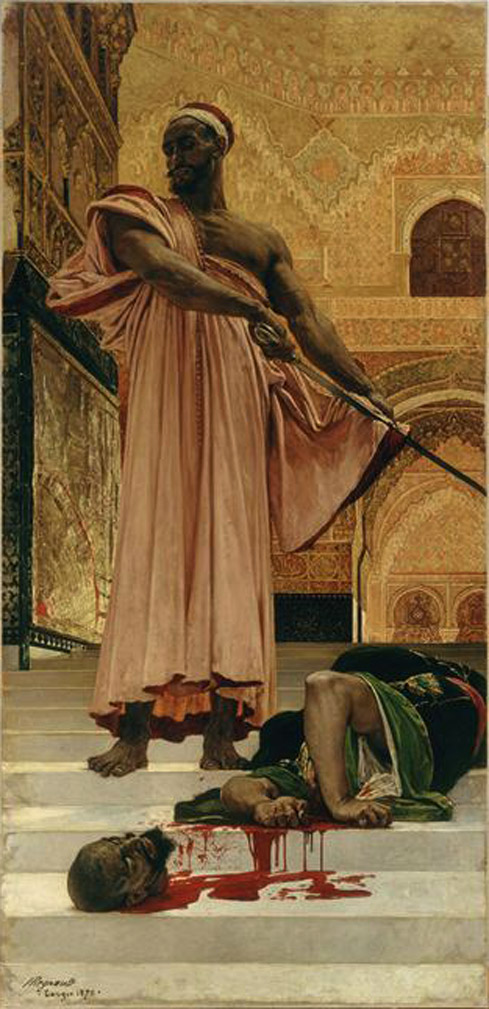What is the relationship between colonialism and the depiction of colonised peoples and lands? What is the legacy of the colonial era for visual studies today? With the piecemeal demise of colonial rule in the twentieth century, several prominent intellectuals such as Aimé Césaire and Frantz Fanon emerged to critique the social structures of colonial discourse. Such figures, who had been raised under colonial rule, brought an intellectual passion borne of personal experience to their work that paved the way for postcolonial studies.
One major branch to emerge in their wake became known as orientalism after the influential text of the Palestinian critic Edward Said. In his groundbreaking study Orientalism, Said argued that nineteenth-century Europe fostered a derogatory and univocal impression of the Orient in order to justify the imposition of colonial governance on its lands and peoples. The significance of his study was to suggest that stereotypes of Arab men and women—as violent, lazy, sexually promiscuous or irrational—were only the most patent examples of a broader cultural attitude that constituted the Orient as a subject of knowledge. Although Said did not deal with paintings or other visual media, historians soon recognised the significance of his thesis and adapted its insights to the study of pictorial materials.
In more recent times, Said’s thesis has come under considerable scrutiny, criticised on the grounds of its homogenisation of diverse cultures into the camps of the colonizing West and the colonized East. While Said himself later adapted his initial arguments, postcolonial methodologies have increasingly entered into dialogue with other critical approaches. Feminist scholars began to unravel the mechanisms that had assumed a male heterosexual viewer for orientalist imagery and explored the possibility of alternative viewing positions, particularly in the work of long neglected women painters. Other scholars have begun to examine the little-known careers of indigenous artists who adopted the pictorial devices and media of the colonizer, but sought to present counter-narrative images of their culture to those articulated in the colonial centres.
By reinserting these peripheral artists back into the critical discussion, the debate has shifted from the univocal, homogeneous reading of metropolitan orientalism to a hybrid cross-cultural history that acknowledges the sophistication and subtlety of indigenous artistic responses to colonial rule. This approach has not merely broadened the canon for discussions of cross-cultural art, but has effectively interrogated the criteria upon which art historians had judged artistic value. The histories of the discipline and its critical approaches are no less implicated in the histories of colonialism than the work of orientalist painters and artists.


